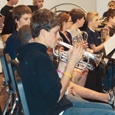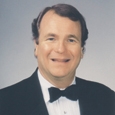
Selecting performance repertoire is one of the most important tasks conductors face. Many principles of great programming are the same regardless of the age or ability level of the musicians.
Mind the Mission
When selecting music, directors should keep in mind the mission of the ensemble. The performance goals of the United States Air Force Band differ from those of a sixth-grade elementary band, but the aim of each group should be to play with the best possible musical and artistic judgment.
An elementary school director wants to promote interest in the music as well as creative development in the players. This requires a certain amount of skill development, and for a younger band, that is a key part of the mission. When programming concerts at my university, I think about the many music education majors who will eventually go out and teach. Much college-level music is too difficult to teach to school bands, but there are many suitable works that offer good examples of styles or composers that they should understand to teach well later.
Building Excitement
There is a point in instrumental training when students and parents ought to feel excited about music and motivated to continue. An elementary band concert should balance important teaching elements with music that will get an enthusiastic response from students and audiences. I rarely use gimmicks, but some may help hook students on music until their skills improve. As a junior high player, I was fascinated by the sound of the band, but many students lack that same interest.
It is sometimes more difficult to get students excited about slower music. They do not always appreciate the great beauty and expression in slow music at first. Help younger players learn to appreciate slower music with the many well-scored slow pieces for young band that are colorful, captivating, and harmonically engaging. Seek these pieces out and make it a goal to get students enamored with the sound of a band playing something that is neither fast nor rhythmic.
Musical contrasts engage people. No matter the level of the group, concerts should have a pleasant mix of tempo, key and texture. Of course, such characteristics as historical eras, length of works, composers, transcriptions and original works should also receive consideration.
Attracting an Audience
The audience is a key element of programming. Recently my school hosted a performance consisting entirely of new music to an audience made up of composers and fans of avant garde works. Although this program thrilled the specialized audience, I usually might program only one such modern piece. I would balance that with works of different styles and eras in order to attract a more varied audience.
How much to program for the audience sparks strong debate. Some directors care most about the artistic value for the students and do not worry about concerts played to just a few patrons. Other directors cheat students by programming a steady repertoire of fluff in an attempt to build an audience. William Revelli once said: “You cannot educate an empty seat.” If there is no one present to hear a concert, the experience is lacking. Students want to be heard and appreciated. If the music is such that no one wants to hear it, then the performances loses some of the zest and excitement for the students.
Directors ought to keep the tenet of building an audience in mind, but it is more difficult today. It is no secret that audiences have generally declined. When Sousa’s band toured, there were no computers, no fast modes of transportation, and not nearly as many options for entertainment on a Saturday night. No doubt this has something to do with dwindling audiences, but directors can combat this with creative and interesting programs that do not sell the players short.
Featuring faculty or outside guest soloists, compositions by students, or a major new work are angles to attract a certain clientele. For university programming, contact high school directors and encourage them to send students with specific interests. High school directors who live close to universities should take advantage of such opportunities; surprisingly, this does not always happen.
More and more we see concerts that are developed with a title and theme. Community bands do this frequently, but public school and university groups have followed suit. A strong theme can work as an advertising tool to interest people. Then it becomes a matter of keeping people interested once they come through the door.
Student soloists provide another educational motivator. Hold a solo competition for high school players to play in front of their ensemble. This is a good way to challenge outstanding students or even an entire section. My first job was at York High School in Elmhurst, Illinois. As I studied the concert programs of one of my highly successful predecessors, I discovered that he frequently featured an entire section of the band to motivate each of them to learn something technically demanding. He knew it would also be good entertainment and please parents. I used to look back at some of those programs and say, “That’s kind of fluffy,” but gradually I understood his reasoning. He wanted great program variety and continued student progress. When I listened to those recordings, I could hear the development of the players.
Student compositions are also exciting for students and audiences. Modern keyboard technology allows high school students to experiment with composition, and they enjoy seeing fellow students perform the music. This happens frequently at colleges with composers eager to have their peers test drive new works. Last spring, I programmed a piece by a graduate composition student. It was a great experience for the composer as well as his peers.
Many public school directors commission new works, and the rise of social media gives students greater opportunities to interact with composers. Having a composer visit the school either to work with students on a piece or attend a premiere is more common these days, and in many instances within the financial reach of public school programs that team up to form commissions.
Programs that feature a visit from a famous composer or a premiere of a major new work by a local composer, draw audiences. It is a wonderful time for bands because so many composers want to write for them. I could spend two years programming only music that people have sent me to consider, and still have plenty left over. Composers and publishers have the means, through email and sound files, to easily send music out to directors.
Choosing Composers
All music students should have an opportunity to learn and study the works of composers that have merit. As with historical music of the ages, there are composers whose music remains as staples, even at the lower levels. Charles Carter, Frank Erickson, Francis McBeth and Clare Grundman, to name a few, wrote a wealth of music some might classify as educational and for school bands. These works are important because students cannot play difficult music without the solid educational training and foundation that is gained from this music. Fortunately, their works are today enhanced with the music of a new generation of gifted composers. Conversely, there are composers whose music does not last, and for good reason.
Many composers write cutting-edge music for upper-level collegiate and professional bands, and many of them have also provided works that would fit well on public school programs. Some works by Michael Daugherty, Samuel Adler, and Steven Bryant can likely be played only by collegiate level or professional ensembles, but each of these composers has written music designed for public school students. Of course, legendary composers such as Holst or Grainger can fit on both lists as well; Grainger in particular wrote music of serious artistic merit, but he also wrote beautiful music that can be played by younger bands.
The publications of James Curnow, Bob Sheldon, Jan Van der Roost and many others continue to provide important vehicles for the education of music students. Without such works, there would not be players in the upper level ensembles to perform the major works. I have tremendous respect for composers who write educational music for students. I remind music education majors that they should be well-versed in all areas and levels of music and composer selection.
There are many source materials for finding appropriate music. Audio and PDFs of scores are easily available. There are also great studies on band curriculum by Acton Ostling, Jr, and Jay Gilbert. Best Music for Young Band (Thomas Dvorak) and the Teaching Music through Performance in Band series are excellent resources sources as are the National Band Association Selective Music Lists. There is no excuse for failing to take advantage of the wealth of information on band music.
Know Your Ensemble
Know your ensemble well enough to listen to a recording or open a score and know right away if it fits the group at the time. A good conductor should be able to flip through a score and evaluate its merit by viewing keys, ranges, technique, compositional form and craft. An effective teacher working with students individually or in small groups will notice exactly where students reside on technique and range. Young teachers will do well to remember the instrument pedagogy classes they took in college. These classes give music education majors some experience with other instruments. I had a difficult time with flute in college, and remembering my struggles made it easier to help students with the same difficulties.
One of the tougher problems in programming is to find music that stretches the skills of top players without leaving less advanced players behind. Nobody wants students to feel that they have failed, but finding this balance is a skill that takes most young teachers some time to learn. New teachers remember the great music they played in college, and want to share it with students. It is common to overshoot the appropriate difficulty level for younger groups. For a small percentage of students, it might be within their reach after weeks of practice, but the remainder may feel that the music is way beyond them and wonder why so much time is spent on it.
Often directors save more demanding works for later in the year. Students will be more advanced technically in the spring and may have more time to learn demanding music when they are not in the midst of fall activities.
Directors should select music to stretch students’ technical skills. In the seventh grade, most students in a given program will fit in to a certain grade level of music. The key is to push that grade level through the high school years to a much higher level. A good program will include music that improves students playing and also captures their interest and sparks creativity and love of music.






